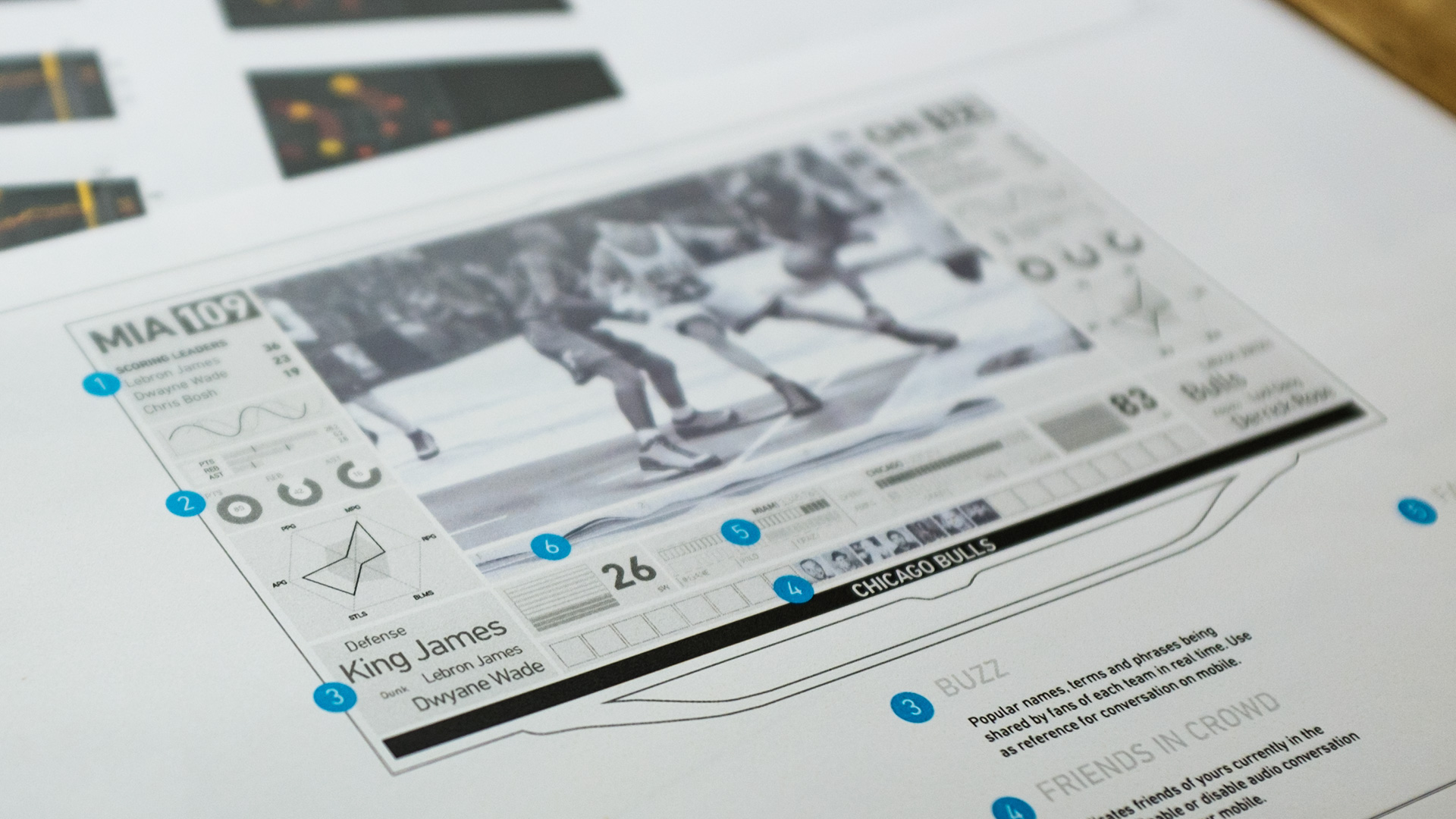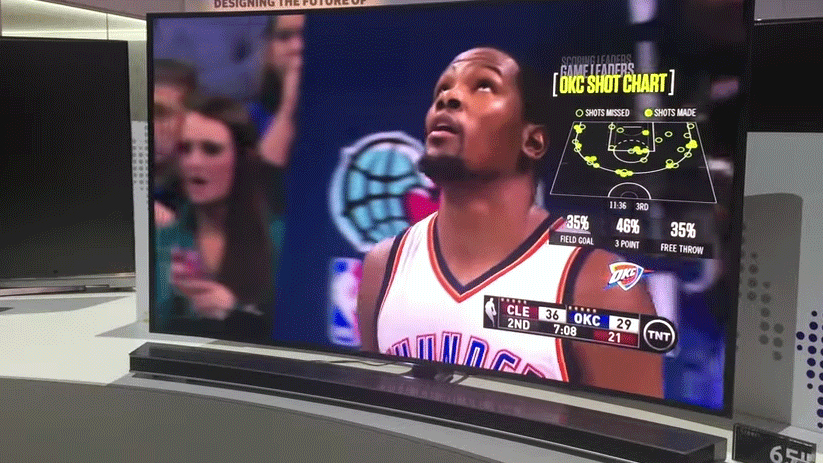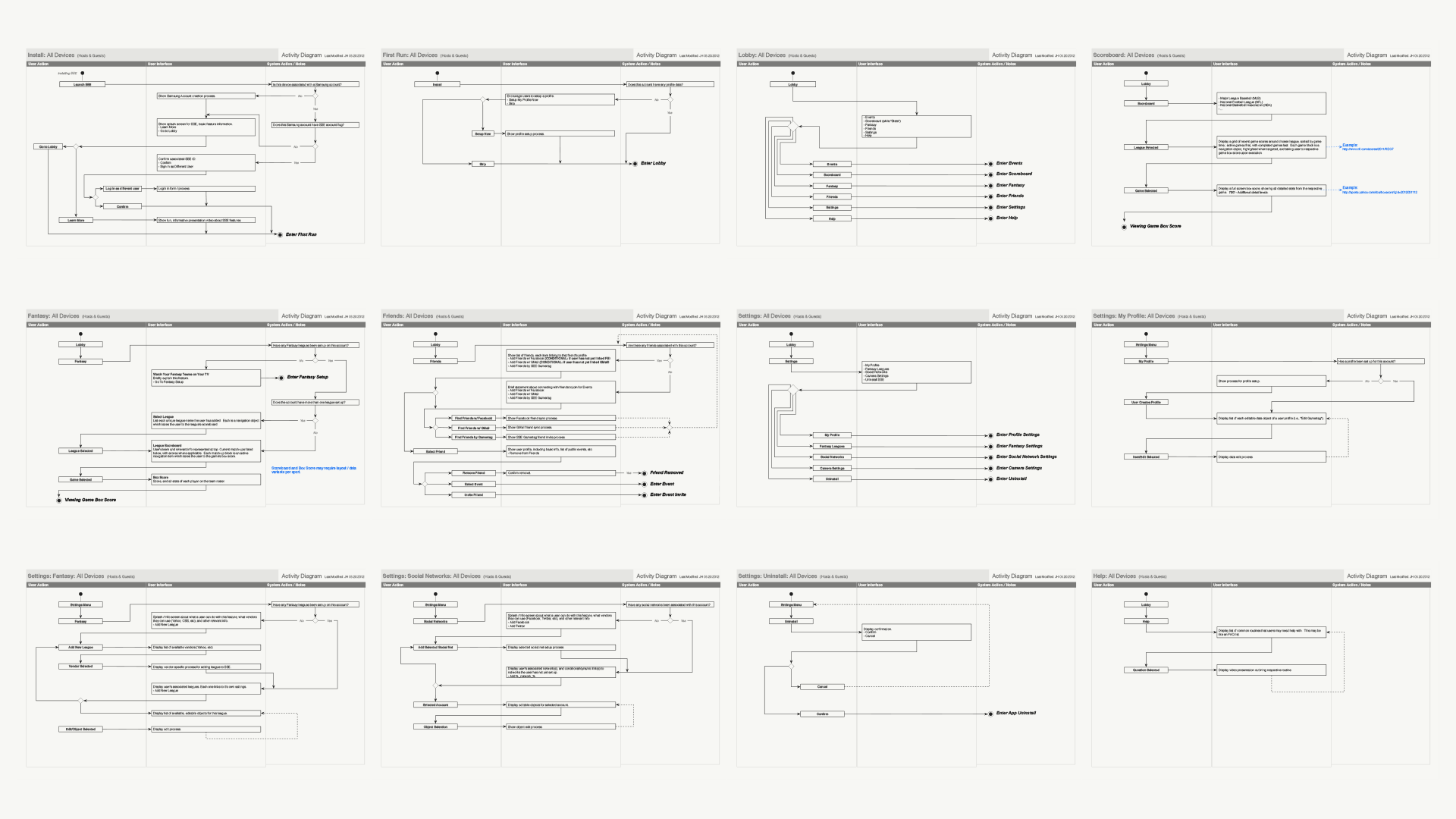
Samsung Sports
Sports are the main driver of TV sales in America. Hoping to capitalize on this fact, Samsung engaged a two year program to explore the potential of integrating technologies and experiences into their products with an emphasis on sports culture. I was hired from the NFL to bring subject matter expertise and help lead designers and engineers through a variety of projects within this program. The concepts needed to be social nature, incorporate data, and generate intellectual property value.
Approach
- Loads of fun workshops.
- Design without limits - anything is possible.
- Learn as much as I can possibly learn about consumer electronics technology.
- Prototype like life depends on it.

Hundreds of concept sketches
Measures of Success
- Executive acceptance of progress and outputs on a quarterly basis (funding).
- Proliferation of sports culture all around Samsung.
- Adoption of outputs into product teams.
Solutions
01
Throwdown was my first concept to be built. It's a dual between two or more parties through rounds of video, where parties debate things like which team or player is better. Stats can be shared, or just purely fun video jeering. The winner is chosen by a community voting one way or the other. This concept was granted U.S. Patent US9579577B2 - my first patent.


Notable deviations in the political space, but I'd rather pretend otherwise. =)
02
Data visualization was explored all over, and variants of these concepts ultimately shipped. These are ways of displaying a variety of sports data in visual formats to create social currency - or rather, things for fans to talk about.

I often use hype videos to communicate complex ideas. These are especially influential in executive presentations when subject matter isn't familiar. Here's one for dataviz made with Greg Tran, who I had the privilege of managing at Samsung before his career exploded.

My reference dataviz concepts provided guidance for the NBA stats app led by Wallace Henry, who I'm super proud of for making the leap from research on my team to product design in the Smart TV lab.

03
Fantasy sports are the essential social experience for sports fans, and it all starts with the draft party. I designed a multi-screen draft experience for players that can support any combination of remotely distributed or onsite participants. It's based on the real draft held by professional sports leagues.
The first challenge was making sure my engineering partners understood the intentions so a prototype could be built.


The essence of the experience is each participants is managing his/her own team on a mobile device, and the TV presents a combination of the results, events, timer, and video feeds of all the participants in their various locations.

Naturally, my team had to come together and try out the prototype! I was there with a camera to capture the experience for our executive presentations.
04
Crowd is about the convergence of fans around content to enjoy sports together. This might sometimes be with a remote friend or distributed few, or in a mass social experience where noise levels at home contribute to a digital representation of all noise aggregated. Crowd uses your phone to capture your voice, and then plays it back on your friends' TVs and vice versa. Furthermore, I developed a business model for Crowd to be a platform for professional sports franchises to stream 24/7 television to their fans.

For surround sound systems, your friends voice channel can be positioned to sound like they're sitting right next to you. This is preferable to mixing all the audio channels into just a front/center TV speaker.

Video demo proof of concept used for user testing. Voice audio is in 5.1 surround sound, so it's not audible on stereo computer speakers.
05
MVP reference v1 for Samsung Sports Experience was all about watching sports together with distributed friends via video chat on your TV. This project was the largest of the program by work load, and involved me writing a spec, creating a design system, mocking up motion and audio components, managing a design team through feature design, and prototype development.

The project was headed up by the late August de los Reyes, who was my manager, mentor and friend. Together we pieced this thing together from top to bottom. We faced new and frustrating challenges every day, but his superhuman ability to keep morale up pushed us all through it.

As part of our team culture, we produced physical sports artifacts that met our design system guidelines.

I made a video to present the demo experience to executives in Korea.

The multiscreen experience spanned Smart TV, tablets and phones.
Outcomes
Bits and pieces of the Samsung Sports program were released - mostly outside of North America. The program might have been a bit too ambitious for the computing power of Smart TVs at the time, and I think perhaps there was some surprise to see just how expensive it costs for a big company like Samsung to formally engage with pro sports leagues. Nonetheless, we had plenty of wins as a team.
Among the best of the outputs from our reference work that did ship was the TV stats app made by Wallace Henry and Jason de Ruña in the Smart TV lab.


Unfortunately, our mobile app didn't ship in full scope. We all worked really hard on this for months. But the quality of this work is an indicator of success for the objective of spreading sports culture! I think we all learned a ton, created friends for life and ultimately came out of this challenging project better.
